How to Write a Rental Property Listing
Summary of Key Takeaways
Creating an effective rental property listing requires strategic planning, compelling content, and legal compliance. This comprehensive guide provides UK landlords with essential techniques to attract quality tenants whilst maximising rental income and minimising void periods.
Key benefits include:
- Reduced void periods through targeted tenant attraction
- Enhanced property presentation techniques
- Legal compliance with UK advertising regulations
- Optimised pricing strategies for competitive markets
- Professional photography and presentation standards
Understanding the Foundation of Effective Rental Listings
The Psychology Behind Tenant Decision-Making
Prospective tenants typically spend less than 30 seconds reviewing initial property listings before deciding whether to enquire further. This critical window demands strategic content creation that immediately captures attention whilst conveying essential information.
Research by Rightmove indicates that properties with comprehensive descriptions and professional photography receive 40% more enquiries than basic listings. Furthermore, detailed rental property listings reduce unnecessary viewings by pre-qualifying serious applicants, ultimately saving landlords valuable time and resources.
Understanding tenant motivations helps landlords craft compelling narratives. Most renters prioritise location convenience, property condition, and value for money, making these elements crucial focal points for effective listings.
Legal Framework for UK Rental Advertising
The Consumer Protection from Unfair Trading Regulations 2008 mandate that all rental property advertisements must be accurate, truthful, and not misleading. Landlords face potential legal consequences for false or exaggerated claims about their properties.
Additionally, the Tenant Fees Act 2019 requires transparent disclosure of all permitted charges upfront. This includes holding deposits, security deposits, and any additional fees that tenants might incur during the tenancy period.
Property advertisements must also comply with fair housing legislation, ensuring no discriminatory language or preferences are expressed. The Equality Act 2010 prohibits discrimination based on protected characteristics, making inclusive language essential for legal compliance.

Market Research and Competitive Analysis
Successful rental listings begin with thorough market research to understand local demand patterns, pricing benchmarks, and tenant preferences. Landlords should analyse comparable properties within a one-mile radius to establish competitive positioning.
Online platforms like Rightmove, Zoopla, and SpareRoom provide valuable insights into local rental markets. Examining similar properties helps identify unique selling points whilst ensuring realistic pricing expectations aligned with current market conditions.
Seasonal variations significantly impact rental demand, with peak periods typically occurring during summer months and university term beginnings. Understanding these patterns enables strategic timing for property marketing and pricing optimisation.
| Research Element | Data Sources | Analysis Focus |
|---|---|---|
| Local Pricing | Rightmove, Zoopla | Price per square foot |
| Demand Patterns | Portal analytics | Enquiry volumes |
| Competitor Features | Similar listings | Unique selling points |
| Seasonal Trends | Historical data | Peak rental periods |
Crafting Compelling Property Headlines and Descriptions
Writing Headlines That Command Attention
Your property headline serves as the first impression for potential tenants, making it crucial for generating initial interest. Effective headlines combine location benefits, property features, and emotional appeal within character limits imposed by listing platforms.
Strong headlines typically include the property type, key feature, and location advantage. For example, “Spacious 2-bed flat with garden near Clapham Junction station” immediately conveys essential information whilst highlighting transport connectivity that appeals to London commuters.
Avoid generic phrases like “lovely property” or “must see” which lack specificity and fail to differentiate your listing. Instead, focus on concrete benefits such as “Recently renovated Victorian terrace with off-street parking” which provides tangible value propositions.
Developing Detailed Property Descriptions
Comprehensive property descriptions should follow a logical flow from general property overview to specific room details, concluding with local amenities and transport links. This structure helps readers visualise the property whilst understanding its practical benefits.
Begin descriptions with the property’s most attractive feature, whether that’s recent renovation, exceptional location, or unique architectural elements. This approach captures attention immediately whilst encouraging continued reading through less compelling details.
Include specific measurements where possible, particularly for living areas and bedrooms. Tenants increasingly expect detailed information to assess suitability without requiring immediate viewings, making comprehensive descriptions essential for pre-qualifying enquiries.

Incorporating Keywords for Search Optimisation
Search algorithms on major property portals favour listings containing relevant keywords that match tenant search criteria. Strategic keyword incorporation improves listing visibility whilst maintaining natural readability.
Primary keywords should include property type, location, and key features. Secondary keywords might encompass nearby amenities, transport links, and lifestyle benefits. However, avoid keyword stuffing which can negatively impact readability and search rankings.
Consider tenant search behaviour when selecting keywords. Phrases like “pet-friendly,” “parking included,” or “garden access” address common search filters whilst highlighting property advantages that differentiate your listing from competitors.
Professional Photography and Visual Presentation
Essential Photography Standards for Rental Properties
Professional property photography significantly impacts enquiry rates, with high-quality images generating up to 60% more interest than amateur photographs. Investment in professional photography typically recovers costs through reduced void periods and higher rental yields.
Wide-angle lenses effectively showcase room proportions whilst maintaining natural perspective. However, avoid extreme distortion that misrepresents room sizes, as this can lead to disappointed viewers and wasted appointments.
Lighting plays a crucial role in property presentation. Natural daylight provides the most flattering illumination, making morning or early afternoon photography sessions optimal for capturing bright, welcoming interior spaces.
| Photography Element | Best Practice | Impact on Enquiries |
|---|---|---|
| Image Quality | Professional equipment | +60% enquiry rate |
| Lighting | Natural daylight preferred | Enhanced appeal |
| Room Sequence | Logical viewing flow | Improved engagement |
| Exterior Views | Multiple angles | Better first impressions |
Staging Properties for Maximum Appeal
Property staging involves arranging furniture and décor to highlight the property’s best features whilst helping potential tenants visualise living in the space. Even minimal staging can significantly improve perceived value and rental appeal.
Remove personal items and excess furniture to create spacious, neutral environments that appeal to broad tenant demographics. Clean, decluttered spaces photograph better whilst allowing viewers to imagine their own belongings in the property.
Consider adding fresh flowers, ensuring all lights work, and opening curtains to maximise natural light. These simple touches create welcoming atmospheres that encourage positive emotional responses from prospective tenants.
Creating Virtual Tours and Floor Plans
Virtual tours provide immersive property experiences that reduce unnecessary viewings whilst attracting serious enquiries. Modern smartphone apps enable landlords to create basic virtual tours without professional equipment investment.
Floor plans help tenants understand property layouts before viewing, particularly important for unusual room configurations or period properties with non-standard layouts. Simple hand-drawn plans often suffice for basic rental properties.
Interactive elements like embedded videos or 360-degree photographs enhance listing engagement whilst providing comprehensive property overviews. These features particularly benefit landlords managing properties remotely or targeting relocating tenants.
Pricing Strategies and Market Positioning
Conducting Accurate Market Valuations
Accurate rental pricing requires comprehensive analysis of comparable properties, current market conditions, and property-specific factors. Overpricing leads to extended void periods, whilst underpricing reduces potential rental income unnecessarily.
Professional rental valuations consider property condition, location benefits, recent improvements, and local demand patterns. Estate agents provide valuable market insights, though landlords should verify recommendations through independent research.
Market conditions fluctuate seasonally and economically, requiring periodic pricing reviews to maintain competitiveness. Properties may command premium rates during high-demand periods whilst requiring competitive pricing during slower market phases.
Understanding Deposit and Fee Structures
The Tenant Fees Act 2019 restricts charges that landlords can impose on tenants, limiting deposits to six weeks’ rent for annual tenancies under £50,000. Understanding these regulations prevents legal complications whilst ensuring transparent tenant communication.
Permitted charges include holding deposits (maximum one week’s rent), security deposits, utilities, council tax, and reasonable costs for tenancy changes or early termination. All charges must be clearly disclosed in property advertisements and tenancy agreements.
Transparent fee communication builds tenant trust whilst reducing enquiry abandonment rates. Landlords should provide comprehensive cost breakdowns including rent, deposits, and any additional charges during initial tenant communications.
Strategic Pricing for Different Market Segments
Target market analysis helps determine optimal pricing strategies based on intended tenant demographics. Professional tenants may accept premium pricing for high-quality properties, whilst students typically prioritise affordability over luxury features.
Location-specific factors significantly influence pricing potential. Properties near transport hubs, schools, or employment centres often command premium rates despite smaller sizes or older conditions compared to suburban alternatives.
Consider offering incentives during competitive periods, such as reduced deposits, included utilities, or flexible lease terms. These strategies can differentiate listings whilst maintaining target rental yields through alternative value propositions.
| Market Segment | Pricing Strategy | Key Considerations |
|---|---|---|
| Young Professionals | Premium for location | Transport links crucial |
| Families | Value-focused | School catchments important |
| Students | Budget-conscious | Multiple occupancy potential |
| Corporate Tenants | Service-inclusive | Furnished expectations |
![Abandoned Property in UK Rentals: The Complete Legal Guide for Landlords [2025]](https://landlordsportal.co.uk/wp-content/uploads/2025/02/Abandoned-Property-in-UK-Rentals-The-Complete-Legal-Guide-for-Landlords-2025-1024x585.jpg)
Legal Compliance and Disclosure Requirements
Mandatory Safety Certifications and Documentation
UK landlords must provide specific safety certificates and documentation to tenants before occupancy begins. Gas Safety Certificates require annual renewal by Gas Safe registered engineers, with copies provided to tenants within 28 days of completion.
Electrical Installation Condition Reports (EICR) must be conducted every five years by qualified electricians, with copies provided to tenants at tenancy commencement. These certificates ensure electrical safety compliance whilst protecting landlords from potential liability claims.
Energy Performance Certificates (EPC) must be provided to prospective tenants during marketing stages, with minimum ‘E’ ratings required for new tenancies since April 2020. Properties failing to meet minimum standards cannot be legally rented without improvement works.
Deposit Protection Scheme Compliance
Tenancy Deposit Protection schemes protect tenant deposits whilst providing dispute resolution services. Landlords must protect deposits within 30 days of receipt using government-approved schemes: Deposit Protection Service, MyDeposits, or Tenancy Deposit Scheme.
Failure to protect deposits correctly can result in significant financial penalties, with courts potentially ordering landlords to pay tenants between one and three times the original deposit amount. Additionally, landlords cannot serve Section 21 notices without proper deposit protection.
Prescribed information must be provided to tenants explaining deposit protection arrangements, including scheme details, deposit amounts, and dispute resolution procedures. This information must be provided within 30 days of deposit receipt.
Right to Rent Verification Procedures
The Immigration Act 2014 requires landlords to verify tenants’ right to rent in the UK before tenancy commencement. This involves checking acceptable documents proving identity and immigration status, with landlords facing potential criminal penalties for non-compliance.
Acceptable documents include British or EU passports, UK driving licences with National Insurance numbers, or Home Office immigration documents. Landlords must retain copies of checked documents throughout the tenancy period plus one year after termination.
Time-limited documents require follow-up checks before expiry to maintain compliance. Landlords should implement systematic tracking procedures to ensure ongoing verification requirements are met throughout extended tenancy periods.
Effective Marketing Channels and Platform Optimisation
Choosing the Right Property Portals
Major property portals like Rightmove, Zoopla, and OnTheMarket dominate UK rental marketing, with most tenants beginning property searches on these platforms. Each portal offers different features, pricing structures, and target demographics requiring strategic selection.
Rightmove maintains the largest market share with approximately 80% of UK property searches, making it essential for maximum exposure. However, premium listing features require additional investment whilst basic listings may lack visibility in competitive markets.
Specialist platforms like SpareRoom focus specifically on rental properties, often providing more detailed tenant matching services and communication tools. These platforms may offer better value for landlords seeking quality tenant engagement rather than maximum exposure volumes.
Social Media Marketing Strategies
Social media platforms provide cost-effective marketing opportunities for rental properties, particularly Facebook Marketplace and local community groups. These channels often attract tenants seeking properties within specific neighbourhoods or communities.
Instagram’s visual focus suits property marketing well, with high-quality photographs and short videos generating significant engagement. Stories and highlights features enable comprehensive property showcases whilst maintaining professional landlord profiles.
LinkedIn can effectively target professional tenants, particularly for higher-end rental properties or corporate housing. Professional networking aspects help build credibility whilst reaching financially stable tenant demographics.
Local Advertising and Community Outreach
Traditional local advertising remains effective for certain tenant demographics, particularly older renters who may not rely heavily on online property searches. Local newspapers, community boards, and university accommodation services provide targeted reach.
Word-of-mouth referrals from existing tenants often generate high-quality enquiries from pre-qualified candidates. Incentivising successful referrals through modest rewards encourages tenant participation in marketing efforts.
Estate agent partnerships can expand marketing reach whilst providing professional tenant vetting services. Many agents offer tenant-finding services for reasonable fees, particularly valuable for landlords lacking time for comprehensive tenant screening processes.
Tenant Screening and Application Management
Developing Effective Screening Criteria
Comprehensive tenant screening protects landlords from potential rental arrears, property damage, and legal complications. Effective screening balances thorough due diligence with fair housing compliance and efficient processing timeframes.
Credit checks reveal financial history and current obligations, helping assess rental payment capability. However, consider individual circumstances rather than relying solely on credit scores, as temporary financial difficulties may not reflect ongoing payment capacity.
Employment verification confirms income stability and tenure, with general guidelines suggesting annual income should exceed 30 times monthly rent. Self-employed applicants may require additional documentation including tax returns or accountant references.
Reference Verification Procedures
Landlord references provide insights into previous tenancies, payment history, and property care standards. Contact previous landlords directly rather than relying solely on written references, which may not reveal complete tenancy experiences.
Employer references confirm employment status, salary levels, and job security. HR departments typically provide basic employment confirmation, though direct supervisor references may offer more detailed insights about employee reliability and character.
Personal references from non-family members can provide character insights, though these carry less weight than financial or landlord references. Professional references from colleagues, clients, or service providers often provide more valuable character assessments.
Application Processing and Communication
Efficient application processing improves tenant experience whilst reducing administrative burdens. Establish clear timelines for application reviews, reference checks, and decision communication to maintain professional standards and tenant confidence.
Transparent communication throughout the application process builds trust whilst managing expectations. Provide regular updates about application status, required documentation, and expected decision timelines to maintain positive landlord-tenant relationships.
Document all application decisions with clear reasoning to demonstrate fair housing compliance and protect against potential discrimination claims. Maintain consistent criteria application across all prospective tenants to ensure legal compliance.
| Screening Element | Verification Method | Decision Weight |
|---|---|---|
| Credit History | Credit reference agency | High |
| Employment Status | Employer contact | High |
| Previous Tenancies | Landlord references | High |
| Income Verification | Payslips/bank statements | Critical |
Managing Enquiries and Conducting Viewings
Professional Enquiry Response Protocols
Prompt enquiry responses significantly impact conversion rates, with studies showing that responses within one hour generate substantially higher viewing booking rates compared to delayed communications. Automated acknowledgement systems can provide immediate responses whilst allowing time for personalised follow-up.
Standardised response templates ensure consistent information provision whilst maintaining professional communication standards. Include essential property details, viewing availability, and application requirements to pre-qualify serious enquiries and reduce time-wasting interactions.
Telephone conversations often convert better than email exchanges for serious enquiries. Offering immediate phone consultations demonstrates accessibility whilst allowing real-time question resolution that builds tenant confidence in the property and landlord professionalism.
Efficient Viewing Coordination
Strategic viewing scheduling maximises landlord time efficiency whilst accommodating genuine tenant requirements. Group viewings during specific time slots reduce individual appointment pressures whilst creating positive competition among prospective tenants.
Provide clear viewing instructions including property address, parking information, and contact details for any access difficulties. Consider using lockbox systems or key safe arrangements to accommodate tenant schedules whilst maintaining security protocols.
Prepare information packs including property details, local amenities, transport links, and application procedures. Professional presentation during viewings reinforces positive property impressions whilst demonstrating landlord organisation and attention to detail.
Converting Interest into Applications
Effective viewing follow-up involves contacting interested parties within 24 hours to maintain engagement momentum whilst addressing any additional questions or concerns that may have arisen after property inspection.
Provide clear application procedures with required documentation lists, submission deadlines, and processing timelines. Complicated application processes discourage quality applicants, whilst unclear requirements lead to incomplete submissions and processing delays.
Consider accepting holding deposits from serious applicants to secure their interest whilst completing reference checks. This approach demonstrates mutual commitment whilst providing financial security during the application assessment period.
Key Takeaways
Creating successful rental property listings requires strategic planning, professional presentation, and legal compliance to attract quality tenants quickly whilst maximising rental returns.
Essential elements include:
Content Strategy: Compelling headlines, detailed descriptions, and strategic keyword incorporation improve listing visibility and tenant engagement rates.
Visual Presentation: Professional photography, property staging, and virtual tours significantly increase enquiry volumes whilst reducing unnecessary viewings.
Pricing Strategy: Accurate market analysis and competitive positioning ensure optimal rental yields whilst minimising void periods.
Legal Compliance: Understanding mandatory certifications, deposit protection, and right to rent requirements prevents costly legal complications.
Marketing Optimisation: Strategic platform selection and multi-channel marketing approaches maximise tenant reach and application quality.
Professional Management: Efficient enquiry handling, viewing coordination, and application processing create positive tenant experiences whilst streamlining administrative processes.
Frequently Asked Questions
How long should my rental property description be?
Optimal property descriptions typically range between 150-300 words, providing comprehensive information without overwhelming readers. Include essential details about property features, location benefits, and rental terms whilst maintaining engaging readability. Longer descriptions may lose reader attention, whilst shorter descriptions lack necessary detail for informed decision-making.
Research indicates that detailed descriptions reduce unnecessary enquiries and viewings by pre-qualifying serious applicants. Include specific room dimensions, recent improvements, and unique selling points to help tenants assess suitability before contacting landlords.
Balance comprehensiveness with readability by using bullet points for key features and structured paragraphs for detailed descriptions. This approach improves scanning whilst providing thorough information for interested readers.
What photographs should I include in my rental listing?
Essential property photographs should include exterior views, all habitable rooms, kitchen, bathroom, and any unique features like gardens or parking spaces. Aim for 10-15 high-quality images that showcase the property’s best attributes whilst providing realistic representations.
Include wide-angle shots of living areas and bedrooms to demonstrate space and layout effectively. Close-up photographs of kitchen appliances, bathroom fixtures, and storage solutions help tenants assess practical amenities and condition standards.
Avoid photographs during poor weather conditions or low lighting situations that may negatively impact property appeal. Natural daylight provides the most flattering illumination for interior spaces whilst external photographs should showcase kerb appeal effectively.
How quickly should I respond to rental enquiries?
Immediate enquiry responses significantly improve conversion rates, with responses within one hour generating substantially higher viewing rates compared to delayed communications. Automated acknowledgement systems provide instant responses whilst allowing time for personalised follow-up communications.
Studies show that enquiries receiving responses within 15 minutes are seven times more likely to convert into viewings compared to those receiving responses after two hours. This emphasises the importance of prompt communication in competitive rental markets.
Consider using scheduling systems or virtual assistants to manage enquiry responses during busy periods or outside normal business hours. Consistent response times build professional reputations whilst demonstrating commitment to quality tenant service.
What information must I legally include in rental advertisements?
UK rental advertisements must comply with Consumer Protection from Unfair Trading Regulations 2008, requiring accurate, truthful property descriptions without misleading claims. Include all mandatory charges, deposit requirements, and any restrictions on tenant types or property usage.
The Tenant Fees Act 2019 requires transparent disclosure of all permitted charges including holding deposits, security deposits, and any additional fees tenants might incur. Failure to disclose charges upfront can result in legal complications and enforcement action.
Energy Performance Certificates must be available to prospective tenants during marketing stages, with minimum ‘E’ ratings required for new tenancies. Properties failing to meet minimum standards cannot be legally rented without improvement works.
How do I determine the right rental price for my property?
Accurate rental pricing requires comprehensive analysis of comparable properties within a one-mile radius, considering property condition, features, and location benefits. Professional rental valuations provide expert market insights though landlords should verify recommendations through independent research.
Online property portals provide valuable comparative data including recently let properties, current market listings, and local demand indicators. Consider seasonal variations and economic factors that may influence rental demand and pricing potential.
Factor in property-specific elements including recent improvements, unique features, parking availability, and garden access when comparing with similar properties. These elements may justify premium pricing despite comparable basic specifications.
What safety certificates do I need before renting my property?
Mandatory safety certifications include Gas Safety Certificates (annual renewal required), Electrical Installation Condition Reports (five-year validity), and Energy Performance Certificates (ten-year validity). All certificates must be provided to tenants before occupancy begins.
Gas Safety Certificates require annual inspection by Gas Safe registered engineers, with copies provided to tenants within 28 days of completion. Electrical certificates must be conducted by qualified electricians with copies provided at tenancy commencement.
Smoke and carbon monoxide alarms must be tested before each new tenancy with batteries replaced as necessary. Some local authorities require additional licensing for Houses in Multiple Occupation (HMO) or selective licensing schemes.
How do I verify a tenant’s right to rent in the UK?
Right to rent verification requires landlords to check acceptable identity documents before tenancy commencement, including British or EU passports, UK driving licences with National Insurance numbers, or Home Office immigration documents. Retain copies throughout the tenancy period plus one year after termination.
Documents with time limitations require follow-up checks before expiry to maintain compliance. Implement systematic tracking procedures to ensure ongoing verification requirements are met throughout extended tenancy periods without missing renewal deadlines.
Failure to conduct proper right to rent checks can result in significant penalties including unlimited fines and potential imprisonment. The Home Office provides comprehensive guidance and checking services to ensure landlord compliance with immigration requirements.
What should I include in my tenant screening process?
Comprehensive tenant screening should include credit checks, employment verification, previous landlord references, and affordability assessments to evaluate rental payment capability and tenancy suitability. Balance thorough due diligence with fair housing compliance and efficient processing.
General guidelines suggest annual income should exceed 30 times monthly rent, though consider individual circumstances rather than rigid criteria application. Self-employed applicants may require additional documentation including tax returns or accountant references for income verification.
Document all screening decisions with clear reasoning to demonstrate fair housing compliance and protect against discrimination claims. Maintain consistent criteria application across all prospective tenants whilst considering individual circumstances appropriately.




